At some point, maybe after your third afternoon crash this week or the 2 a.m. wakeup you can’t blame on caffeine, you start wondering, “Is this just how my body is now?”
For a lot of men, the tipping point is low energy, strength loss, or trouble in the bedroom. For women, it’s perimenopausal mood swings, brain fog, or stubborn weight gain that won’t budge, no matter how “clean” the diet or how much you exercise.
And while a doctor might wave it off as stress or aging, more people are turning to biomarker testing platforms like LifeForce and InsideTracker to get to the bottom of what’s going on and actually do something about it.
Both promise to optimize your healthspan (not just lifespan) with detailed testing, personalized plans, and ongoing support. But they take different approaches. One is more clinical and hands-on, while the other is deeply data-driven and habit-focused.
Let’s break down what they do, how they compare, and which one might help you feel like yourself again.
Disclaimer: This article is for informational purposes only and does not constitute medical advice. Always consult your healthcare provider before making changes to your health routine or starting new therapies.
Topic Contents
At a Glance: Comparing LifeForce vs InsideTracker
Short on time? Here’s a quick snapshot of how LifeForce and InsideTracker stack up, comparing their features, pricing, strengths, and standout differences.

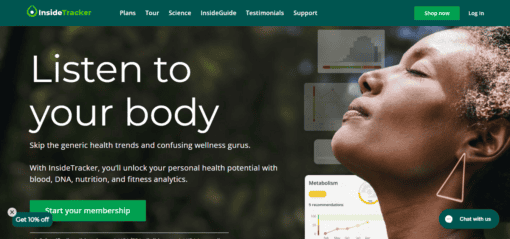
| Feature | LifeForce | InsideTracker |
| Best for | Men 40+ (low T), Women in perimenopause or menopause, anyone who wants medical support | DIY biohackersNutrition-focused usersAthletes |
| # of biomarkers tested | 50+ (with quarterly retests included) | Up to 48 (varies by plan) |
| Clinician involvement | Yes; board-certified doctors and health coaches | No doctors, but you get AI-driven insights |
| Hormone therapies available | Yes (Rx & peptide options available) | No |
| Wearable data integration | Minimal | Yes; Fitbit, Garmin, Apple Watch, Oura |
| DNA analysis | No | Optional add-on (23andMe, Ancestry) |
| Key Differentiator | Full longevity clinic at home, not just data | Deep data and AI-powered lifestyle insights |
| Cost | $349 entry, then $149 per month (includes everything), or $599 for a one time diagnostic | $149 per year, excluding blood tests, or $489-$608, for blood tests and an action plan |
What Does LifeForce and InsideTracker Do?
On paper, LifeForce and InsideTracker promise the same thing: a clearer picture of your health, driven by data. But how they deliver that experience couldn’t be more different.
One is like having a functional medicine team on speed dial. The other? A self-serve platform with enough data to keep even the most curious health nerd busy for months.
Here’s a quick look at what each platform offers and who it’s best suited for.
LifeForce: Like a Functional Medicine Clinic in Your Pocket

LifeForce is a physician-led longevity program that combines biomarker testing with real medical care. Think of it as a concierge clinic built around quarterly blood tests, telehealth consults, and evidence-based interventions, like hormone therapy, peptides, or high-quality supplements.
You start with a phlebotomist visit at home (no waiting rooms), where they collect blood for 50+ biomarkers. After your results come in, a clinician walks you through a custom plan, and you’re paired with a health coach who helps you stick to it.
I liked that it didn’t just spit out numbers. It gave me a clear “Lifescore,” actionable suggestions, and someone to ask when I had that inevitable moment of “Wait, what even is ApoB again?”
Best for:
- Men with low testosterone symptoms.
- Women dealing with menopause-related hormone shifts.
- Anyone who wants real clinical support, not just wellness tips.
InsideTracker: For the Data-Hungry Biohacker (or the Spreadsheet-Loving Runner)
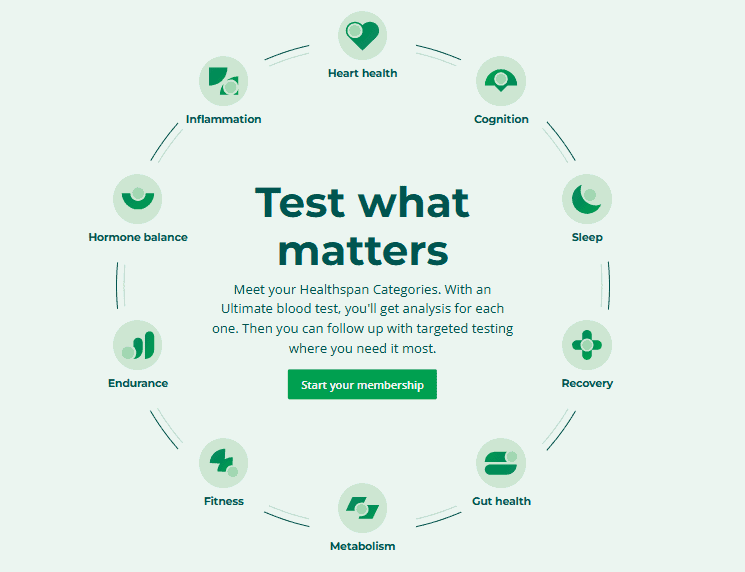
InsideTracker takes a different route. It’s not a medical service. Instead, it’s a deeply scientific, algorithm-driven platform that gives you personalized recommendations based on blood, DNA, and wearable data.
You can test through them or upload results from your doctor or 23andMe. Their system then analyzes your data against decades of research and gives you a detailed Action Plan with food, supplement, and habit changes that are ranked by impact score.
There’s no doctor or coach. But if you love seeing charts that track your vitamin D over time or optimizing your sleep score by tweaking magnesium intake, InsideTracker is kind of addictive. That said, DIY health has limits, so don’t skip medical follow-up if something in your results seems off.
Best for:
- People who like to experiment with diet, fitness, and supplements using their own data. Great for those who want actionable insights but aren’t looking for meds or hormone therapy.
How LifeForce vs InsideTracker Compare on the Stuff That Matters
It’s easy to get lost in features, dashboards, and jargon, so let’s zoom in on what actually affects your experience.
Whether you’re trying to fix your energy, manage hormone shifts, or just understand your bloodwork without needing a medical degree, here’s how LifeForce and InsideTracker stack up across the things that really matter.
Biomarker Testing & Health Insights
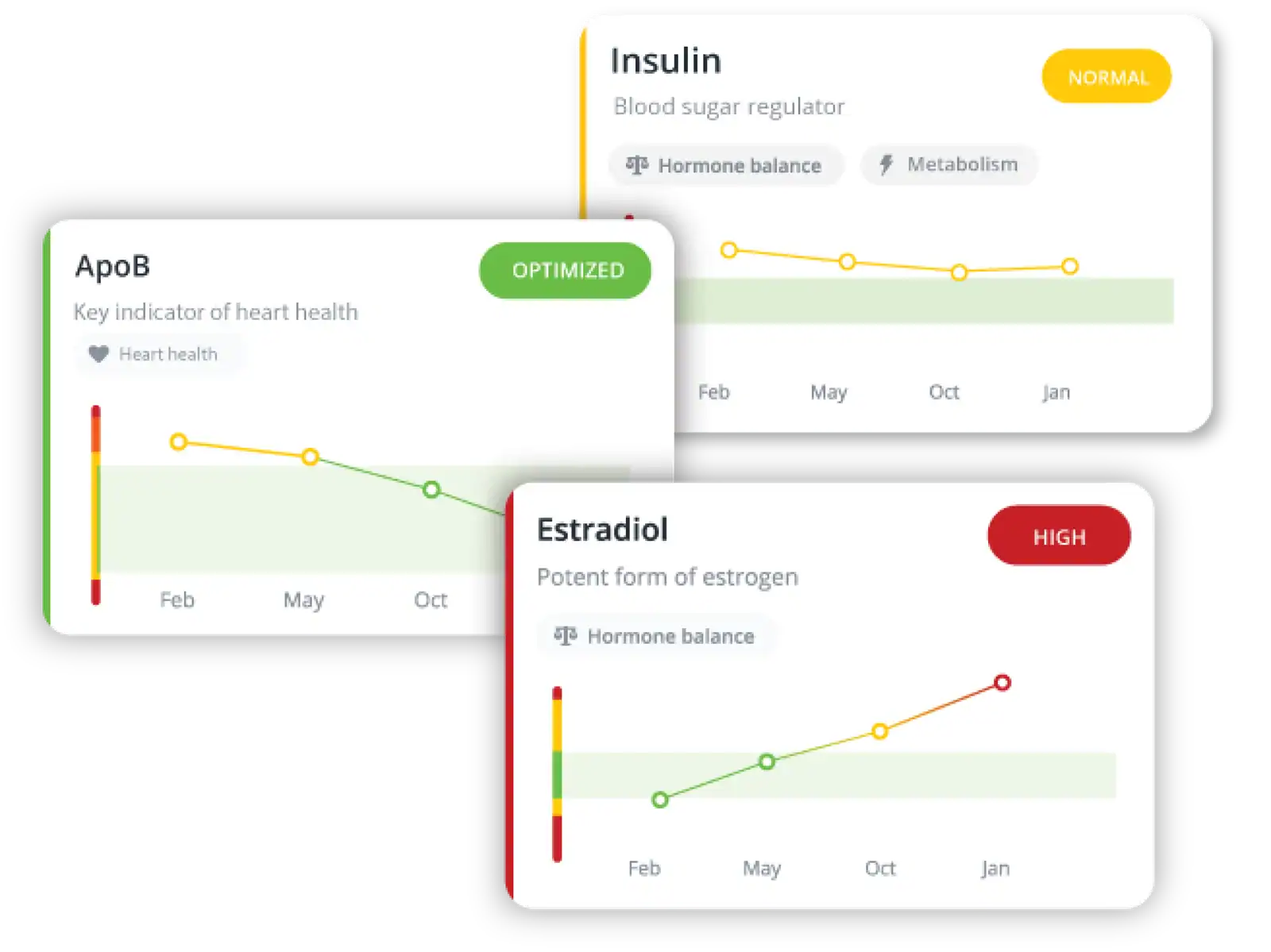
If you’ve ever looked at standard bloodwork and thought, “Cool… but what does any of this mean?”, you’re not alone. Biomarkers are supposed to tell the story of your health, but without context, it’s just numbers in a vacuum.
LifeForce
LifeForce focuses on 50+ biomarkers tied to energy, metabolism, hormones, strength, brain function, and cardiac risk. The experience starts with an at-home blood draw every three months, and you don’t have to do anything except open the door.
Once your results are in, you get a breakdown via telehealth that explains your biomarkers and places them within a bigger-picture “Lifescore” (a proprietary 1–100 scale that reflects your overall state of health and aging).
This is where LifeForce shines: you’re not left to interpret results alone or spend hours Googling and falling down rabbit holes. The dashboard tracks trends over time, flags new risks, and helps you see whether your supplements, lifestyle changes, or therapies are actually moving the needle.
Inside Tracker
InsideTracker, by contrast, gives you a buffet of biomarkers depending on your chosen plan. The “Ultimate” test analyzes 40+ key metrics, from glucose to ferritin to cortisol, and the platform maps each one to your “optimized zone” using data pulled from 7,000+ clinical studies.
It doesn’t rely on a single score like LifeForce, but offers detailed individual reports within 10 categories and personalized ranges based on age, gender, and lifestyle. You can also upload your own bloodwork up to 30 times a year.
If you want even more insight, InsideTracker lets you layer in DNA data and wearables like Fitbit, Apple Watch, and Garmin. It’s useful for athletes, weekend warriors, and health nerds who love tinkering with trends and tweaking performance.
Hormones, Medications, & Clinical Help

Let me be blunt: if you’re over 40 and feeling “off,” there’s a decent chance hormones are involved. From testosterone and estrogen to thyroid and DHEA, these messengers affect everything from mood to muscle and libido to fat distribution. And traditional doctors often won’t test or treat unless you’re wildly out of range.
LifeForce
LifeForce doesn’t just test for hormones; the medical treats imbalances. Men can get support for low testosterone through lifestyle strategies, supplements, or clinical-grade therapies, While women navigating perimenopause or menopause can get help with estrogen, progesterone, thyroid dysfunction, or adrenal fatigue. This isn’t fringe medicine; LifeForce’s clinicians include board-certified endocrinologists, internists, and functional medicine MDs.
In my consult, my LifeForce clinician didn’t jump to a prescription or brush things off as “normal for your age” (like some doctors have). Instead, they walked me through the nuances: slightly low estrogen, sluggish thyroid markers, and sky-high cortisol. The hormone panel was far more comprehensive than anything my OB-GYN or GP had ever ordered.
Inside Tracker
InsideTracker flags hormone-related markers like cortisol, SHBG, or testosterone (in some tests), but can’t prescribe or treat anything. It gives evidence-based lifestyle and nutrition tips, like flaxseed for estrogen balance or magnesium for cortisol control, but if you’re dealing with hot flashes, low libido, or unexplained weight gain, you’ll have to take your results to a doctor for further help.
Coaching & Accountability

Information is only half the battle. What matters more is whether you’ll do anything with it, and that’s where accountability systems come in.
LifeForce
LifeForce builds this into their model with two levels of support: a clinician who meets with you quarterly, and a dedicated health coach who checks in regularly to help with implementation. Your coach can help you adjust your workout plan, troubleshoot your sleep routine, or remind you that your “occasional wine” might actually be a nightly stress habit.
Personally, I found the coaching surprisingly helpful, not pushy or overbearing, just steady accountability that helped me course-correct without guilt. I started sleeping better and stopped skipping protein at breakfast because someone followed up.
Inside Tracker
InsideTracker is more self-serve. You get a sleek Action Plan that shows which changes will have the biggest impact on your biomarkers, ranked by priority and backed by science. But there’s no coach or clinician checking in. If you’re not logging in or engaging with the data, the platform stays silent.
Data Nerd Factor: DNA, Wearables, & AI
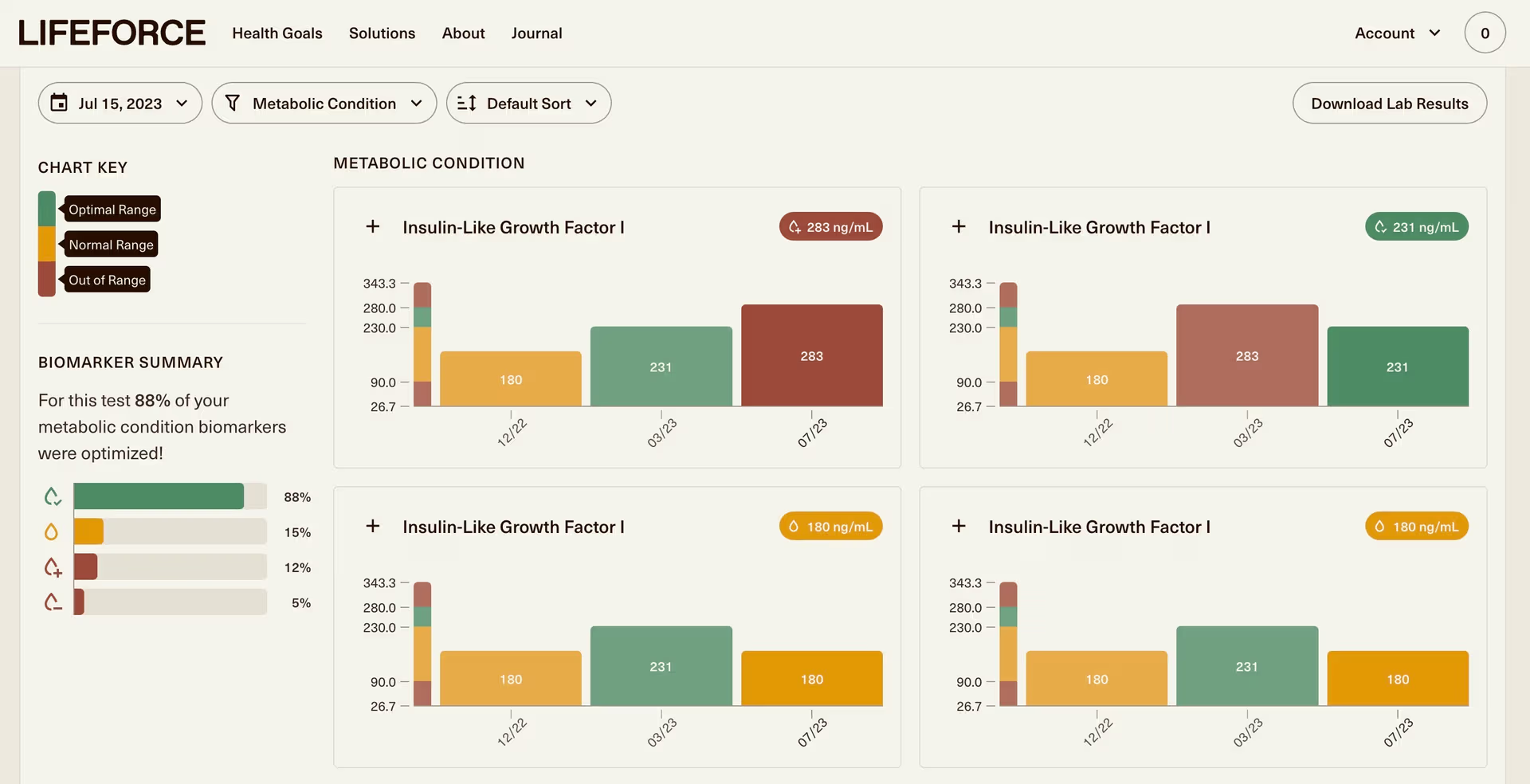
Some people want a doctor to explain their bloodwork. Others want to analyze it themselves with a dozen spreadsheets and a wearable sync. This is where the two platforms part ways.
LifeForce
LifeForce keeps it intentionally streamlined. You get your Lifescore, biological age, and a personalized dashboard that tracks progress over time. But there’s no DNA or wearable integration.
The idea is to keep your focus on the most impactful biomarkers, such as hormones, inflammation, and metabolic health, and to interpret them with real clinical support, not just algorithms. It’s less Quantified Self, more guided care.
InsideTracker
InsideTracker is a playground for data-lovers. It connects with Apple Health, Fitbit, Garmin, and Oura, and you can upload DNA from 23andMe or Ancestry to get even more granular recommendations, like your caffeine metabolism or risk for high LDL.
Its AI engine, SegterraX, is trained on 7,000+ studies and constantly evolves as new research emerges. Your Action Plan updates over time, which means your suggestions aren’t static; they shift with your inputs.
Price & Overall Value
Blood testing and health optimization don’t come cheap, but where does your money actually go? Neither platform is cheap, but they structure pricing very differently.
LifeForce

LifeForce costs $349 upfront, which covers your first at-home blood draw, Lifescore assessment, telehealth consult, and coaching. After that, it’s $149 per month for ongoing testing (every 3 months), clinician support, and discounted supplements or therapies. You can also pay an upfront fee of $599 for a one-time diagnostic.
It’s not cheap, but it’s a full-service model. If you’re the kind of person who appreciates handholding and follow-through, the value is there.
Inside Tracker
With InsideTracker, you’ve got two basic paths:
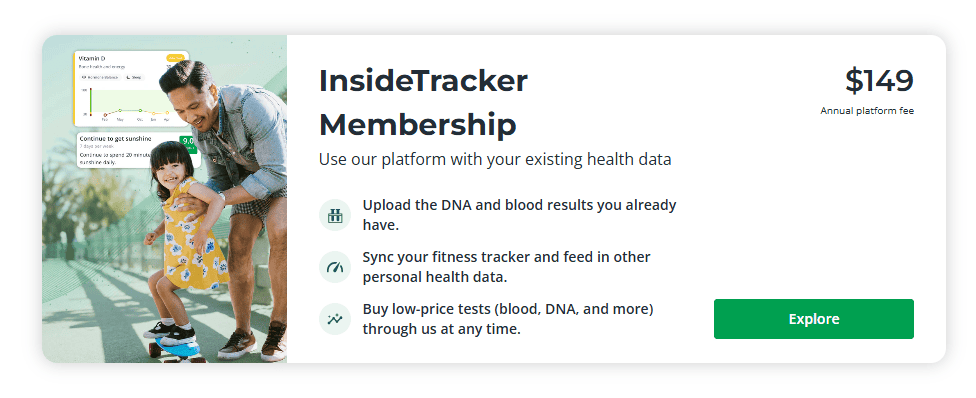
- $149 per year gives you platform access to upload your own bloodwork (from your doctor or a third-party lab)
- $489 gets you one “Ultimate Test + Membership” bundle, which includes a comprehensive lab panel and a year on the platform. Want the test done at home? That’s about $608 with mobile phlebotomy (varies by state).
The catch: that price includes just one test. If you want to retest later, you’ll pay again, unless you already have outside labs to upload.
For annual check-ins, it’s solid. But if you want quarterly updates, deeper hormone testing, or prescriptions, InsideTracker can get expensive fast, and you’ll still need your own doctor for next steps.
So Which Is Better for You?
Choosing between these two platforms isn’t just about price or aesthetics; it’s about what kind of help you need.
Do you want a clinician guiding you through hormone imbalances and sleep issues? Or would you rather explore your data and optimize on your own?
Here’s how to tell which one’s more aligned with your goals, your lifestyle, and your biology.
For Men 40+ With Low T, Belly Fat, or Burnout
Go LifeForce. It offers testosterone support, muscle-focused biomarkers, and real doctors who treat low libido, motivation dips, and brain fog-like medical issues, not personal failures. And quarterly retesting means you’re not guessing whether anything’s working.
For Women in Menopause or Perimenopause
Both platforms can help, but LifeForce is better if you suspect hormonal imbalances or need someone who gets how complex midlife health can be. InsideTracker will give you good food and habit advice, but it won’t prescribe hormone therapy or test as frequently.
FAQs About LifeForce vs InsideTracker
Can I use LifeForce and InsideTracker together?
Technically, yes, you could run InsideTracker’s advanced analytics alongside LifeForce’s clinical care. But for most people, it’s overkill. Unless you’re deep into biohacking, you’ll get more value by choosing the platform that best matches your support needs and health goals.
Is hormone therapy included in LifeForce?
Hormone therapy is available if your test results and clinical consult suggest it’s appropriate. It’s not automatic or one-size-fits-all. LifeForce’s doctors walk you through your options, and prescriptions are only offered when needed and always with your full consent and ongoing monitoring.
Does InsideTracker give medical advice?
No. InsideTracker offers evidence-based lifestyle, nutrition, and supplement suggestions based on your data, but it doesn’t provide medical diagnoses or treatments. If your results raise concerns, the AI will recommend following up with your healthcare provider for clinical evaluation.
How often should I test my blood?
LifeForce tests quarterly by default, which gives you a consistent health baseline and allows for real-time course correction. InsideTracker recommends testing every 3–6 months, depending on your goals and which biomarkers you’re tracking. In the end, more frequent testing offers better trend data.
Can I cancel these services anytime?
LifeForce runs on a monthly subscription, so you can pause or cancel anytime, though it’s built for long-term care. InsideTracker requires an annual membership for platform access, which auto-renews unless you cancel. You can purchase individual blood panels à la carte (like the $489-$608 Ultimate Test), but these still include the membership, and any retesting during the year costs extra. Always check the fine print before committing.
My Final Thoughts: Clarity Is Good, But Action Is Better
Both LifeForce and InsideTracker can give you a deeper understanding of your health. But only one of them really holds your hand and walks you through what to do next.
If you’re a data junkie with a decent sleep routine and strong motivation, InsideTracker gives you the tools to level up.
But if you’re stuck, foggy, exhausted, or just tired of feeling off with no real answers, LifeForce feels like the grown-up version of personalized health care. It’s clinical, supportive, and surprisingly human.
Midlife doesn’t have to mean guessing. Either platform can get you closer to feeling great again. It just depends how much help you want along the way.





